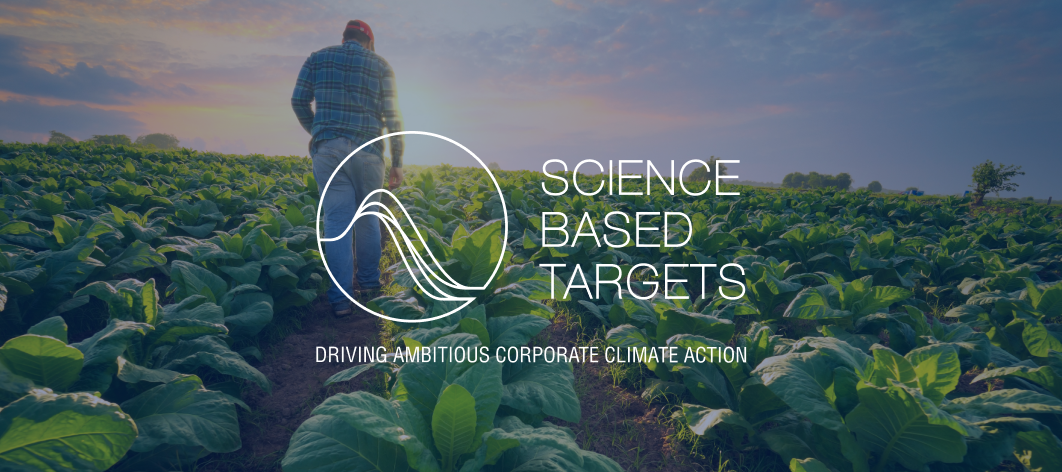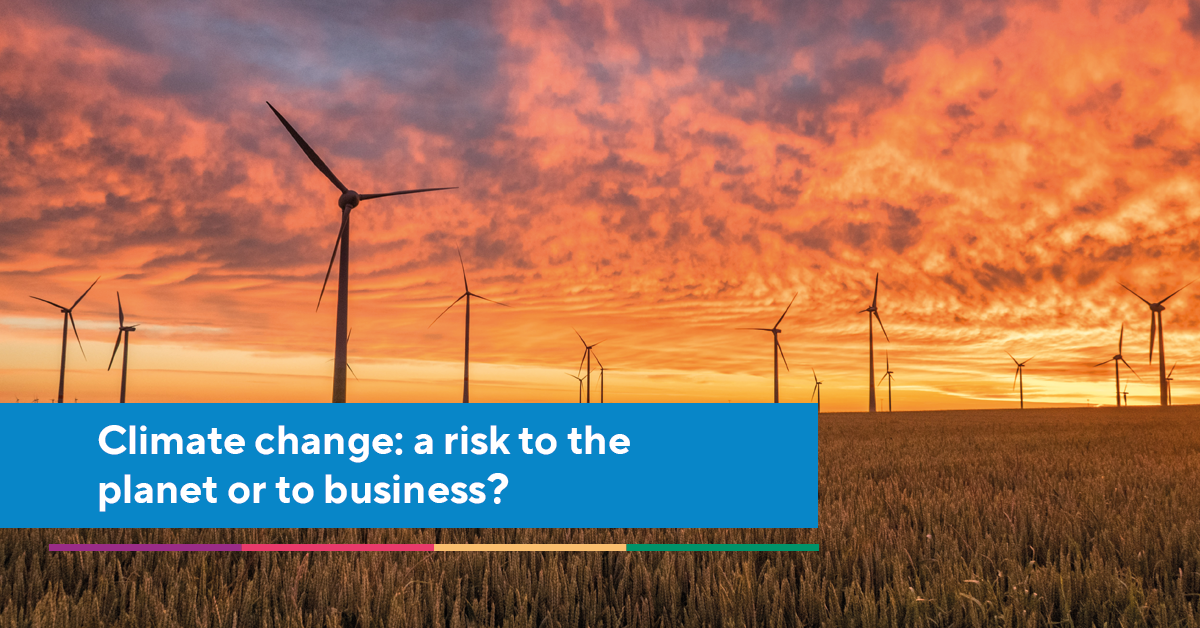My article on the new SBTi FLAG (Forest, Land and Agriculture) guidance looked at specific targets to reduce land related greenhouse gas (GHG) emissions. We saw again the significance of tackling those indirect emissions (or Scope 3), which make up around 95% of the total emissions of a typical consumer goods company. Scope 3 emissions sit outside a company’s own operations and at least 80% of them are from the supply chain.
When you have a science-based target (SBT), it gives stakeholders assurance that you are managing your climate impact seriously. It shows that you are taking the right actions to reach net zero by 2050 and keep global warming to no more than 1.5°C (as per the Paris Agreement).
Almost a fifth of global carbon emissions come from FLAG use such as in textile and agri-food industries. Companies who have already set (or plan to set) a science-based target will also be required to set a separate target for their land-based emissions (FLAG).
Despite the current challenges of inflation, raw material shortages, and climate damage, working in FLAG industries is exciting. Not only can you influence the course of climate change by reducing emissions (not polluting), but you can also remove emissions (restore nature). An example of reducing emissions would be limiting the amount of fossil fuel based pesticides, and an example of removing emissions would be restoring peatland.
What can land intensive businesses do?
If you have yet to create an SBT, this article explains what to do. But let us look at the internal practices that are needed to align suppliers with your SBT – focussing on land intensive sectors.
Sometimes targets are created without the right internal people being involved, and I would strongly recommend that procurement teams are part of the process from the start! If you are responsible for procurement, your team’s decisions will determine the success of the decarbonisation initiative as they drive it through their supply chains. Communication must be continuous and flow across functional silos that include procurement as well as supply chain, data, quality and sustainability (also known as CR / CSR).
Your suppliers are also crucial allies in reducing your Scope 3 emissions. In fact, the more suppliers that have an SBT, the sooner you can achieve your own SBT.
If you already have an SBT and are wondering how on earth to get your suppliers on board, read on!
1. Communicate with your suppliers
- Let your suppliers know you have committed to a science-based target and your reasons for doing it.
- You also want to understand your suppliers. Specifically, ask your suppliers:
- Where they are on their own decarbonisation journey.
- What emissions data they can provide.
- How they plan to reduce emissions.
- If they already have a net zero or science-based target or if they plan to set one.
Encourage your suppliers to set an SBT. For SMEs, there is a simpler process through SBTi. The number of suppliers who have an SBT can be a valuable leading indicator for you in achieving your own SBT.
2. Use digital tools such as dashboards and supplier scorecards to maintain visibility and build supplier capability
These tools help you to keep alignment and focus across teams who manage supplier relationships. Consider using specialist support such as Supply Pilot who helps companies engage meaningfully with their suppliers by providing designed-for-purpose tools and specialist support for your team to act on sustainability requirements.
Some suppliers might already have detailed emissions data because they have carried out lifecycle analysis (LCA) for their products. Some may have begun to understand their Scope 1 and 2 (your scope 3) emissions to which a proportion can be attributed to you. However, most suppliers won’t be able to provide any of this data right now. Therefore, you need to combine spend and weight-based analysis with a comprehensive supplier development program to ensure you can both provide a Scope 3 baseline and ensure that your suppliers begin to build the capabilities that are required.
3. Segment your suppliers according to their emission status and support them accordingly
When you engage with suppliers who have the most critical products and / or who need the most help, your decarbonisation programme will get the traction you need to move quickly.
- Focus on the most important products – use your Scope 3 analysis if you have it.
- Focus on suppliers with the highest emissions and those who source raw materials and ingredients that are linked with high emissions such as soy (as ingredient and in feed), meat, palm oil, shrimps, rice and packaging.
- Talk with your suppliers, including logistics providers about the issues and ask them what actions they are taking to reduce emissions.
- Where necessary, provide supporting information to explain the issues.
- Agree a plan with timescales and targets.
4. Update your procurement practices and policies
Successful decarbonisation programs are those that are integrated into your processes so they become part of your daily business. This will require you to:
- Include an emissions disclosure in your supplier listing procedure.
- Update your sourcing policies to include FLAG related requirements.
- Include a requirement to source from non-deforested land. Use existing guidance to help you for example, CGF’s Forest Positive Coalition supplier requirements.
- Update your product specifications with your requirements.
- Ask your suppliers to use sustainable sources of raw materials. For example paper from wood sourced in certified forests, palm oil that hasn’t come from recently deforested land, chicken that’s not fed on soy from deforested land.
Remember to update your suppliers when there are any changes in your requirements.
5. Continue to improve data quality
Your data quality will not be perfect at the outset, but it will improve over time. This is important to make your reporting more accurate, to focus on critical emissions reductions and not forget the smaller proportion of suppliers.
- Ask for more detail in product specifications for example, list the type and quantity of packaging.
- Include packaging components and relevant certification.
- Integrate product, ingredient and packaging quantities into your product listing system.
- This will help you to better link individual quantities to inventory spend data.
6. Remove your emissions
While reaching net zero requires you to rapidly reduce your GHG emissions, you can also remove emissions (sequester or suck up) using nature. The FLAG guidance has separate requirements for reporting these removals but you can make a start with their listed solutions. This is not the same as offsetting which should be a last resort for those emissions you can’t reduce or remove.
Be prepared to incentivise your suppliers if you ask them to invest in certain solutions such as conservation agriculture or peatland protection.
7. Use existing guidance wherever possible
Ample toolkits and guidance list science-based actions to reduce and remove emissions. It’s also important to use industry guides as they will keep your messaging consistent and save you time searching for the right wording.
Wrapping up
Reducing and removing emissions is a tremendous challenge and it is doable. An SBT guides your organisation and shows the outside world that you are serious about keeping global temperature rises under the limit of 1.5°C. For businesses that rely on land-based resources, there are wonderful opportunities to positively influence the course of climate change.
You can join the growing list of companies who are already making progress - Supply Pilot and partners are there to help you!




